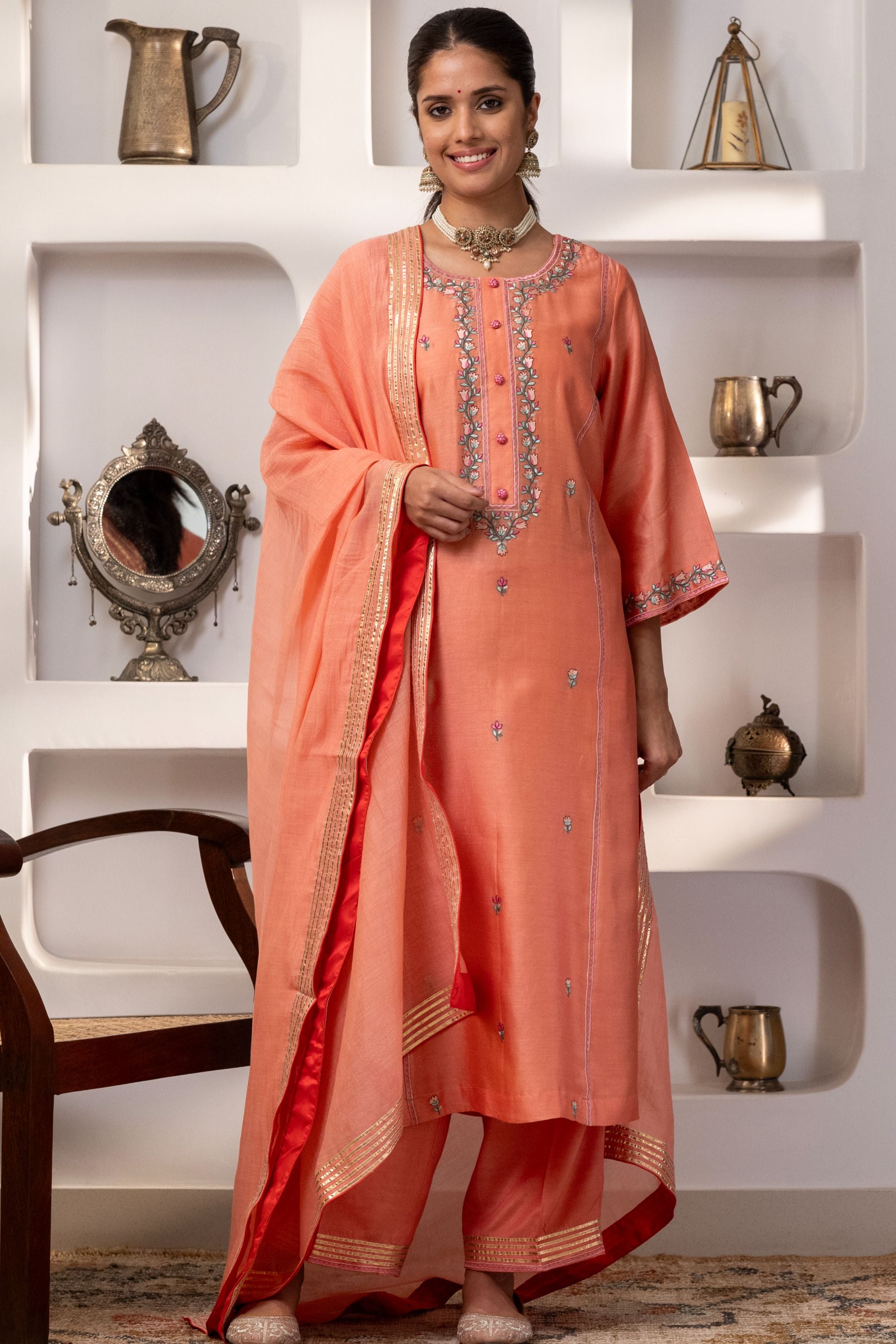A typical chanderi fabric
CHANDERI is a town situated in the state of Madhya Pradesh in India and is a renowned centre for traditional weavers who weave silk and cotton to create a fabric named Chanderi. This fabric is protected in India by a Geographic Indication (GI) .
Typical bandhini fabrics
BANDHANI is a type of tie and dye technique practiced mainly in the states of Rajasthan and Gujarat in India. The word is derived from the Sanskrit word ‘banda’ (meaning, ‘to tie’). It involves tying and dyeing pieces of cotton or silk cloth and can be dyed using natural or artificial colours.
A typical kalamkari pattern
KALAMKARI is a form of painting with a pen and is derived from the persian word ‘Kalam’, which means a pen; and ‘kari’, which means craft. This style evolved mainly in the Krishna district of Andhra Pradesh under the patronage of the Mughal kings.
A typical dabu print
DABU PRINTING is a mud-resistant technique of printing wherein mud is applied onto the fabric, followed by dyeing. This process is repeated for a double and a triple dabu and henceforth creates multiple superimposed patterns.
A typical brocade pattern
BROCADE is a class of richly decorative shuttle woven fabrics, often made in silk and with or without gold and silver threads. Benarasi brocade is known by the name ‘Kinkab’ in Varanasi and typical patterns or designs include birds, animals, flowers, creepers, paisley, and Mughal motifs.
A typical kantha work design
KANTHA EMBROIDERY is a type of embroidery popular in West Bengal and is a decorative running stitch in the form of motifs.
Typical zardosi embroidery
ZARDOSI EMBROIDERY or zari embroidery is done with a crochet hook using metallic thread, dabka, tilla, beads, sequins, etc. It is an ancient form of Persian embroidery and has been passed down to generations. It reached its peak under the Mughal emperor, Akbar. This work was revived after the Indian independence in Hyderabad and Lucknow. It is a must in any Indian wedding trousseau.
Typical chikankari embroidery
CHIKANKARI is a form of hand embroidery done extensively in Lucknow. The thread is preferred to be white and floral motifs such as rose, jasmine, lotus, and paisley. The fabrics used may be muslin, georgette, chiffon, or similar fine fabric.
Typical PHULKARI embroidery
PHULKARI and the bagh embroidery of Punjab is a labour of love. In the olden days, at the birth of a male child, the paternal grandmother began to embroider ‘vari da bagh’ for her grandson’s wedding, dreaming of the day when she would wrap the boy’s bride in it before the new bride entered her new home.
Typical Kutch embroidery
KUTCH EMBROIDERY is from the pastoral tribes of Kutch, such as the ‘Rabaris’, who do some of the finest hand embroideries. This type of embroidery was originally used for camel decorations and personal use. The embroidery mirrors their lives, reflects their hidden desires, and aspirations and expresses the cultural traditions and religious beliefs of the society to which they belong.
